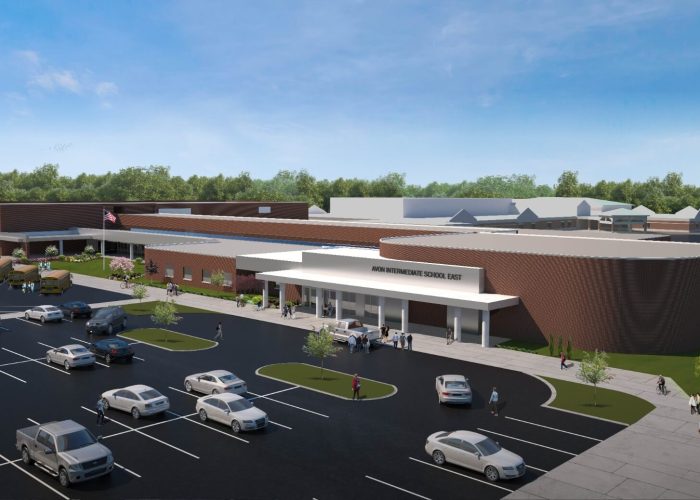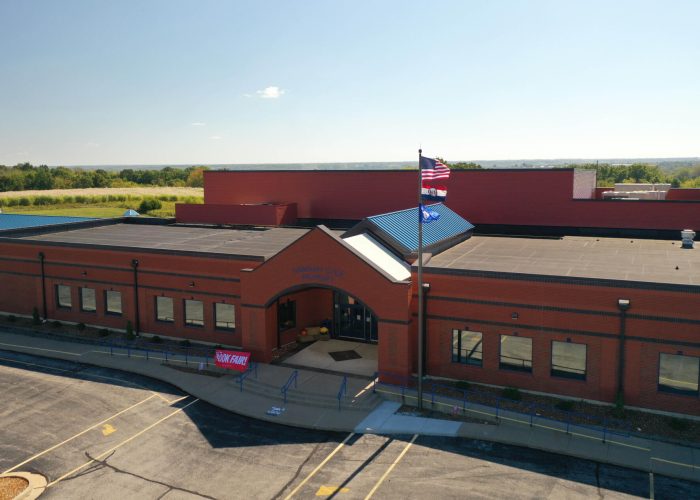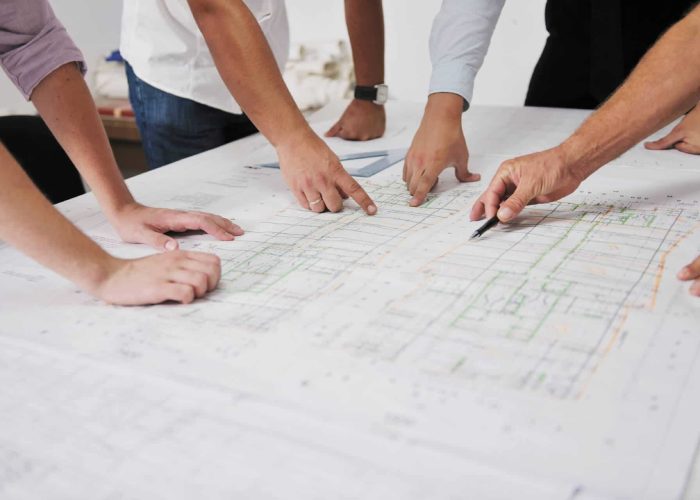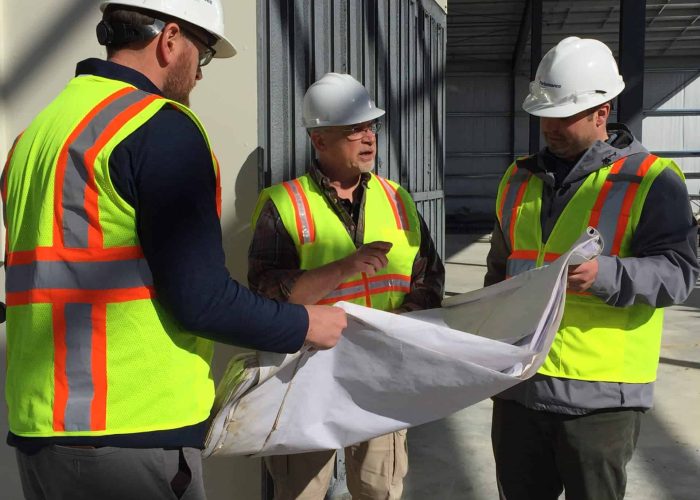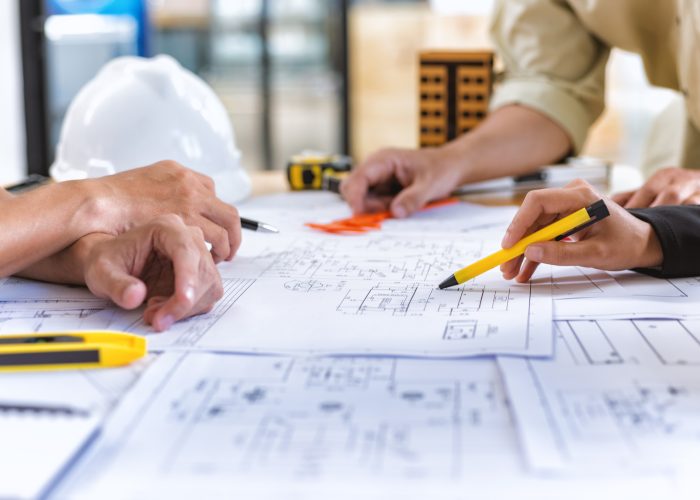
Design-build is an integrated delivery procurement model for capital improvement projects for either new construction or existing facility renovations in which a single entity, working under one contract, performs the project’s design and construction.
What is the definition of design-build?
Design-build is a growing method for project delivery. However, it isn’t new. This approach has existed for thousands of years, even pre-dating Hammurabi’s code. This building delivery method was originally termed the “master builder” approach and was used to construct wonders such as the Parthenon, the Great Pyramid of Giza, and the Florence Cathedral. In this approach, the master builder oversaw both the design and construction of a project, acting as the architect, engineer, and construction manager—ensuring projects were completed with a focus on the quality of the end product, cost performance, and schedule control.
This method hasn’t changed much since its inception. Now referred to as design-build, or progressive design-build, a design-builder is the person or entity that provides design and construction services under a single design-build contract. This design-build contract outlines the agreement between the Owner and the design-builder to provide architectural, engineering and related design services as well as the project’s labor, material, and associated construction services, still focusing on quality, cost, and speed of delivery.
Because there is only one contract, the design-builder sees the project through from the initial design concept to construction completion, carrying single-source responsibility. The design-builder is fully responsible and accountable for delivering all aspects of the project, including identifying any problems or issues, pinpointing the underlying causes, and correcting them. They are also responsible for managing all contracts with other companies, including subcontractors, materials providers, and equipment vendors, relieving that responsibility from the Owner.
What is the design-build process?
The design-build process initially begins with procurement, and the procurement process varies based on state law. The steps vary based on state rules, but there are generally five key phases of the procurement process:
- Determination: The Owner decides to utilize design-build for an upcoming project and establish a technical review or owner committee
- Request for Qualifications (RFQ): The Owner’s representative develops the qualifications package and publishes the notice of the request
- Request for Proposals (RFP): After evaluating qualifications and determining the highly qualified design-builders, the Owner submits a request for proposal
- Qualitative Selection: Upon receiving proposals, the Owner’s committee reviews and evaluates, scoring each according to the pre-determined criteria package
- Award: With the scores from the technical review committee, the Owner notifies the winning design-builder
Once the procurement phase is completed and a design-builder has been selected, the execution of the design-build project commences. The design-builder works closely with the Owner to continue to learn more about their design-to-budget priorities, needs, and project objectives. Concurrently, design-build team members begin structural assessments and review any existing floorplans and systems. With a solid assessment of the Owner’s project goals and budget, the designers and contractors work together to design and deliver the project, increasing project efficiency. Construction is not dependent on the completion of design plans and usually happens parallel to design work. Any issues between design and construction are usually identified early on, and changes are made collaboratively throughout the process.
Once the project is substantially complete, the design-builder will conclude with a hand-off which typically includes a final walk-through, the transfer of plans and documentation, and any necessary training on building systems.
What are the benefits of design-build?
Accounting for nearly 40% of nonresidential design and construction, the design-build project delivery method hosts many benefits over other, more traditional delivery approaches. In short, design-build is known to get projects completed on time and on budget:
- Minimize Owner Risk: The owner has ONE contract with the design-builder, and the entity is solely accountable for results and performance guarantees. The design and construction team members are contractually obligated to work together to meet constructability within the available scope and budget. The design-builder has the risk for project completion with no change orders within the agreed to scope of work. The elimination of change orders is significant in eliminating unexpected costs and delays.
- Higher Quality: Owners typically work more closely with the design-builder to ensure the project meets expectations. Sole accountability and ongoing owner and team collaboration ensure fewer gaps throughout the design and construction process.
- Quicker Delivery: Projects are usually delivered quicker as construction features parallel project schedules and rely on continual communication with the design and construction team. Because of continual and open communication, there are typically fewer delays that could impact the schedule.
- Cost Efficiencies: Because the designers and contractors work together throughout the process, there are fewer changes, fewer claims, and less litigation. Project costs are known much earlier in the process, and change orders are limited to Owner requested scope changes.
What is the difference between design-build and other delivery methods?
With the rise of the Industrial Revolution in the 20th century, specialization replaced the master builder and paved the way for today’s more traditional design-bid-build approach. The design-bid-build process has three distinct phases: design, procurement, and construction, beginning when an Owner hires an architect to deliver complete plans for the project. The Owner then takes bids from contractors based on those plans, and the lowest responsible and responsive bidders will perform the work according to the design specifications. Architects, designers, and contractors may have little to no interaction and bear no obligation to one another during the project. The Owner retains responsibility for managing the separate contracts, ensuring the project is delivered accordingly.
Instead of segmenting the design and construction disciplines, the design-build approach invites collaboration. Contractors and trades are invited earlier into the design process to make design adjustments accordingly. As such, designers and contractors integrate their disciplines from the outset and are contractually obligated to work together for the best interest of the owner’s project. As a result, projects are often delivered quicker with higher quality, cost efficiencies, and reduced risk.
Is design-build construction the best option for my next project?
Design-build construction can be applied to a broad range of construction projects and across industries. Performance Services provides design-build services to education and municipal government markets.
Design-build may not be suitable for every owner or every project. Characteristics should be carefully reviewed before choosing a delivery method for your project.
Consider the following:
A shared understanding of project scope – Does the owner have a clear idea of the project boundaries, and do key stakeholders share an understanding of the objectives?
Owner expectations for integrated delivery – What is the need to integrate the design and construction phases of the project? Projects naturally evolve, and there could be unidentified needs. Design-build allows maximum flexibility to continue design into the construction phase that could deliver a higher quality result.
Owner relationship preferences – Is there a desire and capacity for placing confidence in single-source responsibility and a single-contract approach? Belief in the team leader’s integrity, expertise, creativity, ability to listen, and proven service performance is a critical owner consideration. The real value of a team approach ultimately depends on relationships built on trust and the ability of the team leader to create the necessary synergy that will benefit each phase of the project for the owner’s benefit. Design-Build requires a collaborative, team-based effort.
Adequate owner resources – Are there adequate time, attention, and enthusiasm to invest in a project from concept to completion? An integrated and comprehensive approach requires owner engagement and commitment throughout the selection, award, design, and construction process to benefit a value-based, choice-based delivery method.
Established budget – Are funding limits a factor? Design-Build has several benefits that support a fixed budget, such as ongoing value-based feedback and the ability to incorporate changes without a new contract. The owner’s tolerance level for unexpected change orders should also be considered. An advantage of Design-Build is fewer change orders. Performance Services guarantees no change orders within the agreed to scope of the project.
Established completion date – Is a shortened duration or a fixed move-in date required for the project?
Project schedule overruns are a considerable risk that can have ripple effects on costs and, therefore, requires careful consideration. Design-Build features parallel project schedules that enable a shortened project duration. The design-builder is not incented to extend the project schedule.
Value-based project feedback – The owner and design-build team work together from concept to completion to explore options and choose what methods and materials maximize quality and owner value.
Conclusion
With its roots in the Master Builder values of quality, cost, and design, design-build construction is a tried and true approach to project delivery. Since the 1970s, design-build has been a growing alternative to traditional design-bid-build methods and construction-manager-at-risk. Known for its high levels of collaboration between the project team (design and construction) and the Owner, this method outperforms its counterparts regarding higher quality, quicker delivery, cost efficiencies, and reduced risk.
Ready To Start Building With Us?
Contact us for an onsite, no-obligation facility assessment. With over 20 years of experience creating optimal environments, we have the expertise to help with your next project.


